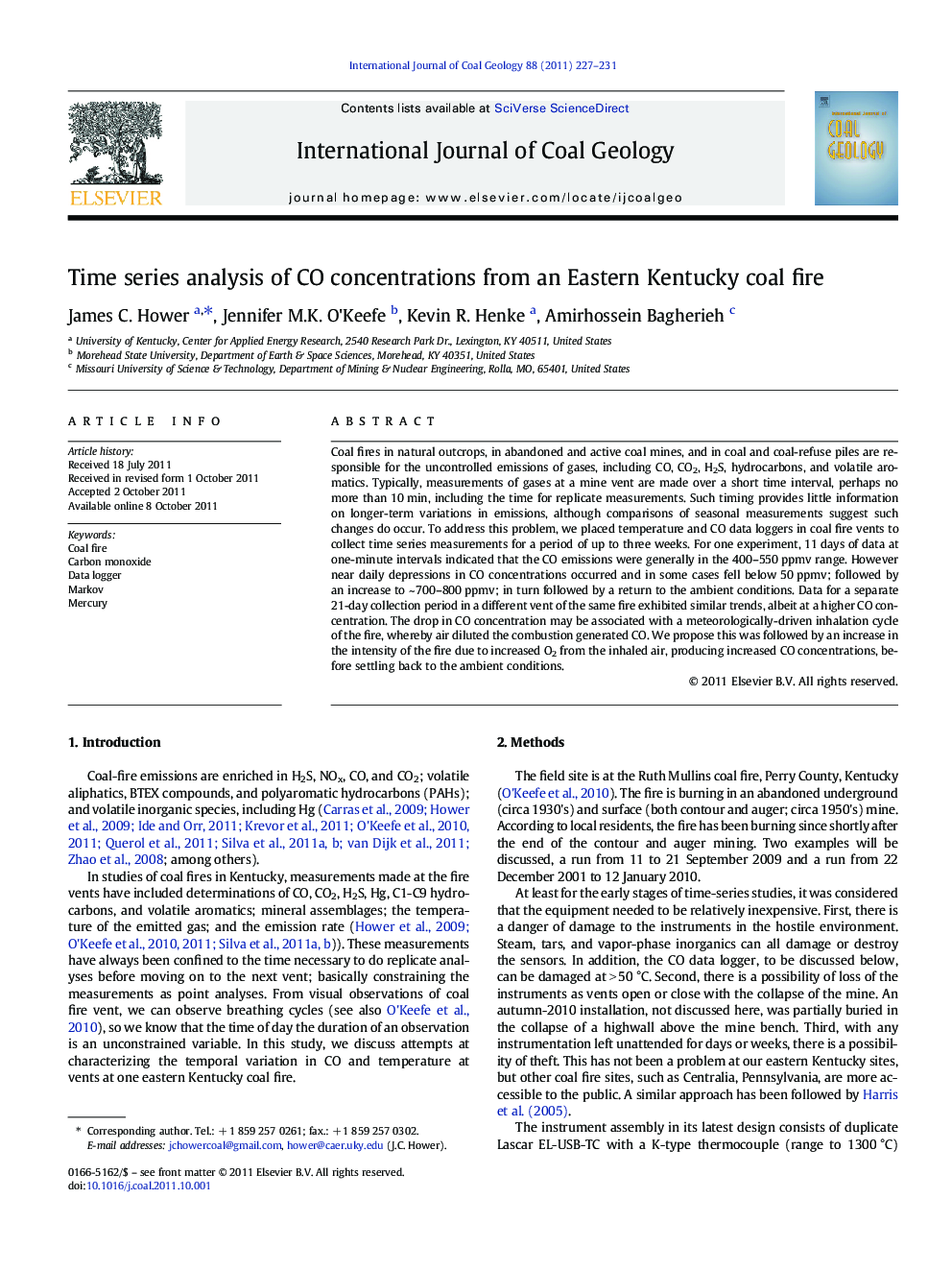| Article ID | Journal | Published Year | Pages | File Type |
|---|---|---|---|---|
| 1753533 | International Journal of Coal Geology | 2011 | 5 Pages |
Abstract
Coal fires in natural outcrops, in abandoned and active coal mines, and in coal and coal-refuse piles are responsible for the uncontrolled emissions of gases, including CO, CO2, H2S, hydrocarbons, and volatile aromatics. Typically, measurements of gases at a mine vent are made over a short time interval, perhaps no more than 10Â min, including the time for replicate measurements. Such timing provides little information on longer-term variations in emissions, although comparisons of seasonal measurements suggest such changes do occur. To address this problem, we placed temperature and CO data loggers in coal fire vents to collect time series measurements for a period of up to three weeks. For one experiment, 11Â days of data at one-minute intervals indicated that the CO emissions were generally in the 400-550Â ppmv range. However near daily depressions in CO concentrations occurred and in some cases fell below 50Â ppmv; followed by an increase to ~Â 700-800Â ppmv; in turn followed by a return to the ambient conditions. Data for a separate 21-day collection period in a different vent of the same fire exhibited similar trends, albeit at a higher CO concentration. The drop in CO concentration may be associated with a meteorologically-driven inhalation cycle of the fire, whereby air diluted the combustion generated CO. We propose this was followed by an increase in the intensity of the fire due to increased O2 from the inhaled air, producing increased CO concentrations, before settling back to the ambient conditions.
Related Topics
Physical Sciences and Engineering
Earth and Planetary Sciences
Economic Geology
Authors
James C. Hower, Jennifer M.K. O'Keefe, Kevin R. Henke, Amirhossein Bagherieh,
